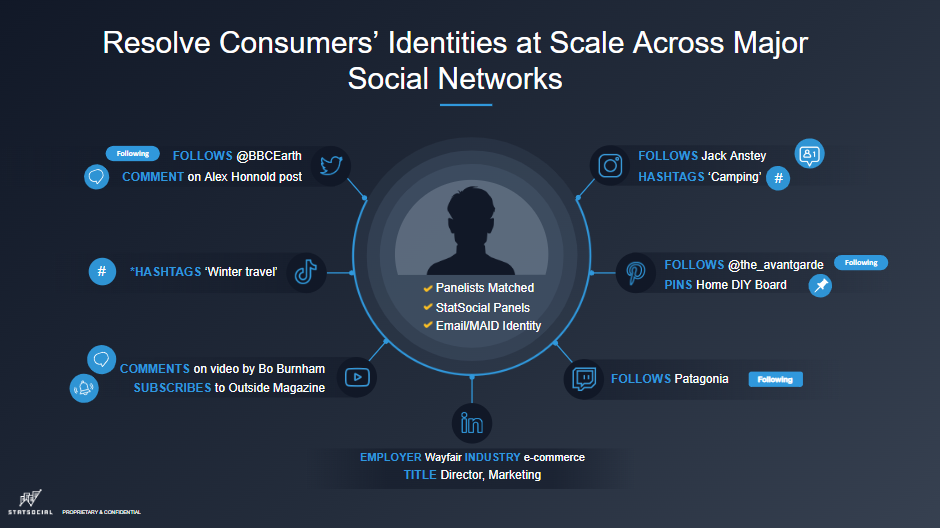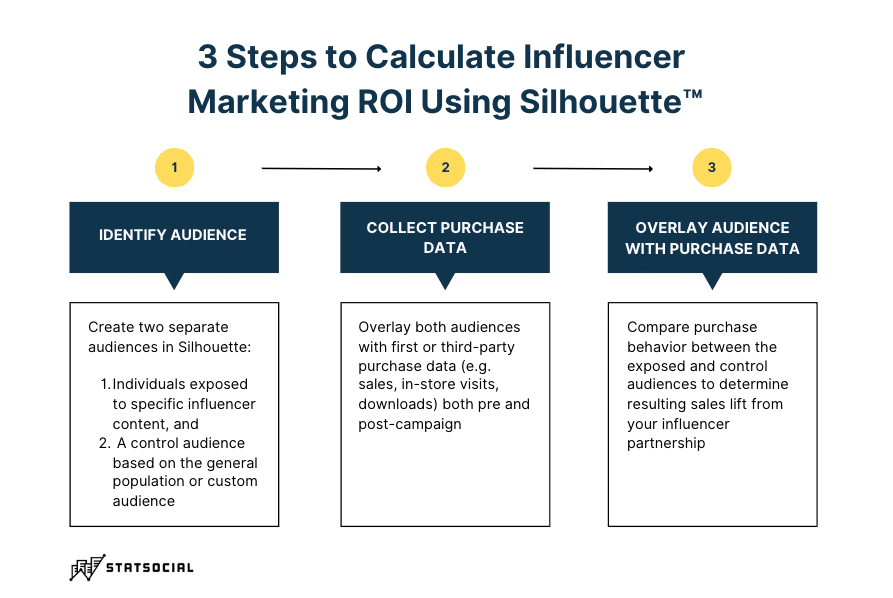Have you ever purchased a product based on an influencer’s recommendation? According to studies, half of all consumers have.
And that’s because influencer marketing campaigns—when done well—are compelling. People feel like they know the influencers they follow. And trust their recommendations as they would a friend’s.
Because of their effectiveness, over 60% of marketers polled ran influencer campaigns last year. But how many of them were able to accurately calculate influencer marketing ROI? Odds are, far fewer—as it’s a pain point for marketers.
The good news? There’s now a better way to calculate influencer marketing ROI to understand the effectiveness of your campaigns. We’ll show you how—and break down:
- Common methods to calculate influencer marketing ROI (including pros & cons)
- The key to accurate influencer marketing ROI: Social audience insights
- 3 steps to calculate influencer marketing ROI using StatSocial’s platform
- Real example of how a marketing team measured sales impact with StatSocial
Common methods to calculate influencer marketing ROI (including pros & cons)
We’ve talked to a lot of our marketing peers, and got a breakdown of how they currently measure influencer campaign effectiveness. Here’s what they said, and the pros and cons of each:
Promo codes
Promo codes are a quick and easy way to track an influencer campaign and are probably what you think of when you hear influencer marketing.
They are typically unique phrases or codes influencers share with their followers to use when purchasing the product they are promoting. While these can be a great starting point, they are easily abused. With sites like Honey and RetailMeNot, promo codes are shared with the more general public, making it difficult to determine the success of your campaign.
Pros: Great for motivating potential buyers
Cons: Widespread sharing of codes can skew results
Affiliate links
Affiliate links are specific URLs that have an affiliate’s ID attached to the end of it. These links are most commonly used by bloggers and vloggers and help marketers track the percentage of traffic and sales converted as a result of the influencer campaign. Typically, the influencer keeps a small portion of the sales tied to the link as a commission.
Pros: Very little upfront cost and easy to set up
Cons: Easy for followers to ignore if no extrinsic incentive is provided
[Read more about why affiliate links and promo codes aren’t enough here.]
UTM tags
UTM tags are bits of code attached to the end of a URL. Marketers are able to track various parameters about where a specific visitor originated.
These parameters include the medium (ie. an email link, social media post), the source (the specific site they came from), the campaign associated with the link, and the content (ie: image, blog post).
While UTM tags are fairly easy to create, they require some knowledge of Google Analytics to effectively capture the traffic insights.
Pros: Provides very specific information about the traffic source of a sale
Cons: You’ll need more than basic google analytics knowledge to track
Landing pages
An alternative to creating a UTM tag is creating a unique landing page for the influencer to drive their following to. Unique landing pages allow you to see traffic and resulting purchases through tracking the number of clicks on the influencer’s shared link. Unlike promotional codes, these pages are less likely to be shared to other websites.
Pros: Easy to measure page traffic and converted sales
Cons: Individuals may not be ready to purchase immediately and could potentially come back to the main site over the landing page.
The key to accurate influencer marketing ROI: Social audience insights
The above ways of measuring influencer campaigns are a great starting point. But they don’t provide a holistic understanding of impact.
Marketers, here’s the true influencer measurement solution you need: social audience insights.
Leveraging StatSocial’s platform, the industry’s only comprehensive social audience insights platform, you can access valuable self-declared data and insights on any audience across the many social platforms they engage on. Only with StatSocial’s platform can you gain a holistic view of who they are, and what matters to them:

Alternative social data and insight solutions rely on Twitter data alone, demographics or modeled data. Very few influencers and social users are strictly on Twitter. So it’s imperative that you gain access to social insights that are sourced from across major social networks if you want a true and accurate measure of impact.
Luckily, using a social audience insights platform like StatSocial’s makes capturing social insights about your target audience incredibly simple, so you can start accurately calculating influencer marketing ROI.
3 steps to calculate influencer marketing ROI using StatSocial
So how do you use social audience insights to calculate influencer marketing ROI? It’s a pretty straight-forward process, but you do need two things to lay the groundwork:
- First or third-party purchase data
- Access to exposed and/or engaged social audience data
The first one is up to you to figure out, but the second one is where StatSocial’s platform comes into play. Using our platform, follow these 3 easy steps to calculate the ROI of your influencer campaigns:

Real example of how a marketing team measured sales impact with StatSocial
Companies of all sizes leverage StatSocial’s platform to measure the impact of their influencer campaigns. Recently, we worked with a multinational CPG (Consumer Packaged Goods) company that had invested millions of dollars in a year-long influencer campaign to promote one of their iconic brands.
The CMO needed to understand the ROI on these influencer investments to decide if they should move forward with future partnerships or if they should allocate budget elsewhere. In short, their team needed a way to quantify the sales impact across a 6 month period.
To understand the impact their campaign had on sales, they partnered with StatSocial to identify the exposed social audiences that could be mapped back to their third-party purchase data. So here’s how they did it:
Within StatSocial’s platform, they built 2 exposed and 1 control audience:
Audience 1) Fans of the influencers
Audience 2) Fans of the video game the influencers played
Audience 3) A control group
Then they identified the number of customers within the exposed and control audiences. Within each audience, they identified the following KPIs during the 6 month period:
- Average transactions per household
- Number of days between the next purchase
- Number of units sold
They discovered that those people in the social audience exposed to the influencer’s content spent significantly more compared to the control group. Key findings during that 6 month period included:

Ultimately, the influencer partnership did positively impact sales, resulting in a 8% lift in sales and a 8% lift in units sold compared to the control audience. As a result, the CMO decided to further invest in their influencer marketing program, as the ROI exceeded other digital marketing efforts.
Take the guesswork out of campaign measurement with StatSocial
As marketers, our job is to create the connections with our audiences that drive growth and revenue. We can’t do that without understanding their interests, affinities and preferences. StatSocial’s power lies in eliminating the guesswork and assumptions about our audience and the impact our marketing decisions have.
If you want to learn more about how StatSocial’s platform can help you calculate influencer marketing ROI, let’s chat.